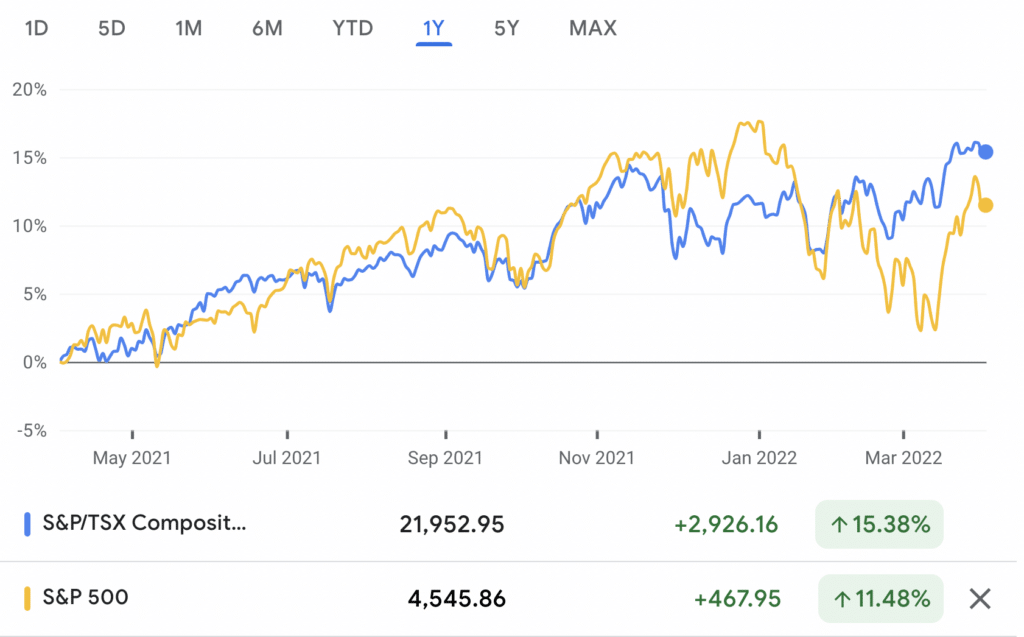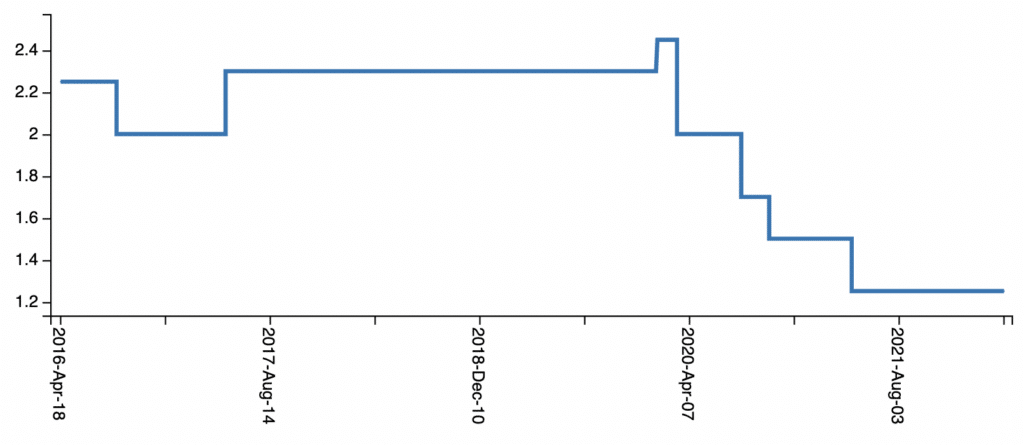
Buongiorno! We’ve spent two glorious weeks in Italy, arriving first in Rome before moving on to Florence and Venice. Three very different, yet equally amazing cities!
I loved the history of Rome. We toured the Colosseum, the Roman Forum, and the Vatican, ran through Circus Maximus and along the Tiber, tossed a coin into Trevi Fountain, and climbed the Spanish Steps.
Florence stole our hearts with the spectacular views from Piazzale Michelangelo and inside Boboli Gardens. Pictures cannot properly capture the experience of standing in front of the Duomo, or at the statue of David. A truly remarkable city.
We stayed in Florence over Easter, and it was insanely busy. We attempted to view the exploding Easter cart (Google it) but ended up on the wrong side of the square in a crowd. It sounded amazing, though!
Then we spent three magical days in Venice – which was a dream come true for me. We took the kids on a gondola ride across the Grande Canal (under the Rialto Bridge) and through the many small canals that flow through the city. We got lost in the many side streets (alleys). We toured Doge’s Palace, walked through the Bridge of Sighs, and climbed St. Mark’s Basilica for a breathtaking view of Piazza San Marco.

Yesterday we took a train from Venice to Arezzo and then rented a car to drive to our final destination – Cortona – to spend a week in Tuscany.
Even though we’ve been on a 32-day trip before, three weeks is still a long time to travel and we were feeling burnt out yesterday. It will be nice to relax in our quiet hilltop house for the rest of our trip.

A magical view, even in the rain last night
It has been so nice to be able to travel again and see such amazing places in Italy. We’re looking forward to a relaxing stay in Tuscany before heading back home next weekend. In the meantime, feel free to follow along on Twitter where I’ll semi-regularly update this thread:
Waited two years for this trip – taking in the sights of Rome today pic.twitter.com/0wyYNbE8Jt
— Boomer and Echo (@BoomerandEcho) April 10, 2022
What I’ve Been Reading:
I shared my thoughts about how young investors should handle their first taste of market volatility for this Toronto Star article:
“The challenge, he said, is that investors want all of the upside in a good market and none of the downside in a bad market, which can cause investors to overestimate their risk tolerance in bull markets then panic when their investments fall in value.”
A terrific video from Dimensional to give some perspective on short-term investment performance. Investors can focus on the daily rain clouds and sunshine the markets bring. Or they can think about the long term.
“You go to a sunny climate because, on the whole, you expect nice weather. But, even in a tropical paradise, it will rain from time to time. Global markets have been bumpy so far in 2022. Investing for the long term means breaking out the umbrella from time to time. It doesn’t mean that the rain will last forever.”
Andrew Hallam on why your investment results sometimes have little correlation with the intelligence of your plan.
Here’s PWL Capital’s Justin Bender explaining the math behind why passive investors MUST beat active investors:
A great article by Nick Maggiulli at Of Dollars and Data on why you’ve been thinking about inflation all wrong.
Here’s Nick Maggiulli again with an op-ed at CNBC arguing that high inflation won’t hurt stock returns in the long run.
Why a mere 2% allocation to cryptocurrencies in an otherwise diversified portfolio will account for 25% of your overall portfolio volatility.
Rob Carrick says it’s time for banks to reverse a rate grab from 2015 that punishes borrowers to this day (looking at you, TD).
A really good piece by mortgage broker David Larock on the Bank of Canada’s 0.50% rate hike:
“Variable rates are still available at discounts of more than 1% over their fixed-rate equivalents, and I continue to believe that they have the potential to save borrowers money over the next five years.”
I’ve been getting a lot of questions from readers asking if they should change their investment strategy, or lock-in their variable rate mortgage because of everything going on in the world.
For the record, I’m still invested in 100% VEQT across all accounts. I’m still in a variable rate mortgage. What was sensible three months ago or three years ago is still perfectly sensible today.
I love how Andrew Hallam connects financial freedom and happiness, and in this piece he explains why some FIRE devotees really miss the mark when it comes to their goals.
Why you might need to update the executor in your will as you get older. Makes good sense.
Finally, these cautionary tales about investing in private mortgages seem to come up all too often. Here’s one that collapsed, affecting 500 homes and $10 million in investor money.
Ciao – enjoy your weekend!

It’s common for investors to be concerned about inflation because it brings to mind the high inflationary period of the 1970s that completely wrecked stock and bond returns. It’s also easy for investors to draw spurious conclusions about government debt and linking that to the hyperinflation that occurred in Zimbabwe or Venezuela. This article aims to set the record straight about inflation and let investors know how to invest during periods of high inflation.
Are We Experiencing High Inflation?
Inflation is one of the biggest concerns as we near the end of the global pandemic and economies begin to re-open. Governments around the world spent record amounts to keep their citizens, small businesses, and corporations afloat over the past two years, while a majority of those still employed were able to save money thanks to an economy devoid of travel and entertainment.
The result was a significant uptick in savings rates, with Canada’s household savings rate reaching a high of 28.2% in July 2020.

All this money sloshing around on the sidelines has been and will continue to be deployed into goods and services, creating additional demand for a still strained global supply chain. Consumers are ready to dine out in restaurants, attend concerts, and engage in “revenge travel” to make up for lost time.
When that happens, prices tend to rise. Canada’s consumer price index (CPI) has been rising steadily since March 2021. The 12-month change in the CPI for February 2022 was 5.7% (Stats Can). That’s well above the Bank of Canada’s 2% inflation target, and even above their acceptable range of 1-3%.
Meanwhile, the U.S. inflation rate soared to 7.9% in February 2022. (Trading Economics).
Both the Federal Reserve and the Bank of Canada previously signalled they were willing to let the economy run a little hotter than usual to make sure we achieve so-called full employment. But both central banks are now in tightening mode, raising interest rates by 0.25% in March 2022 to kick-off a series of expected rate hikes for the rest of 2022.
It’s clear that high inflation has arrived and persisted for longer than expected. The question is what should investors do about it (if anything)?
How Investors Should Position Their Portfolio to Deal with High Inflation
What exactly is an inflation hedge? In an episode of the Rational Reminder podcast, Benjamin Felix said an inflation hedge needs the following three characteristics:
- It will correlate positively with inflation, including responding to unexpected inflation.
- It won’t be too volatile
- It will have a positive real expected return
The problem, Felix said, is that asset doesn’t exist.
Indeed, most investors should just stick to their original (sensible) investment strategy and not try to change it up based on market conditions. But there may be good reasons to re-position your portfolio to try to combat high inflation. Here are some ideas to consider:
Stay Invested in Global Stocks
We don’t know for sure which sectors and individual stocks will outperform in the future, especially over the long term. That’s why it’s always wise to invest in all of them through a low-cost and globally diversified ETF portfolio.
Even if Canada or the US experiences inflation, that doesn’t necessarily mean that Europe or Asia will also be hit with higher inflation, or that global markets will react in the same way. So, we diversify that risk away by owning a global portfolio of stocks.
For example, Canada’s resource-driven stock market seems to have held up better than the US stock market over the past year, and in particular since the beginning of 2022. That’s not to say investors should pile into Canadian stocks – it just illustrates why diversification is so important.

Investors may look for profitable businesses that generate positive cash flow and that can raise prices. Since inflation increases the input costs for businesses (think lumber and gasoline), the ones that can respond quickly and increase their prices can keep their profit margins intact. Energy and industrial sectors have performed well during periods of high inflation. As demand for commodities rise, so do their prices and in turn their profits. Oil and gas stocks were particularly hit hard during the pandemic and are now surging higher as the global economy recovers.
It’s important to note, however, that individual stocks or sectors are too volatile to be considered an inflation hedge. The same is true for commodities.
Hold Some Cash in High-Interest Savings
It may sound counterintuitive to hold cash during periods of high inflation since the increased cost of goods is literally eating away at your purchasing power.
But consider that central banks will likely continue to raise rates to combat any sustained high inflation. This should drive up the interest rates earned on your savings deposits. This favours the idea of putting your cash in a high-interest savings account over a GIC, since you can’t take advantage of the upswing in rates when your money is tied up in guaranteed vehicles.
EQ Bank offers one of the leading high-interest savings account rates at 1.25%. Keep in mind, EQ Bank’s interest rate was as high as 2.45% in March 2020 before the Bank of Canada’s emergency rate cuts took hold, so there may be upside as the year goes on.

Inflation-protected Bonds
Rising interest rates and inflation are terrible for long-term bond prices. If rates increase by 1%, a bond with an average duration of 10 years would fall in price by 10%. That’s not ideal when central banks increase rates to cool things off in a high inflationary environment.
But investors who are concerned about inflation can hold US Treasury Inflation Protected Securities (TIPS), or real return bonds in Canada, for inflation-protected income. These bonds offer inflation-protected income from federal government bonds that pay semi-annual interest.
According to Benjamin Felix, inflation-protected bonds are an obvious inflation hedge if the bond duration perfectly matches your investment time horizon. However, short-term inflation-protected bonds have negative real return yields, and long-dated inflation protected bonds are too volatile to be a hedge in the short term.
Holding Fixed Interest Rate Debt
Rising inflation can actually be a good thing for fixed interest rate borrowers (such as mortgage holders) because they’re repaying their loans with money that is worth less than what it was worth when it was originally borrowed.
Think about it: Let’s say you still have a $250,000 balance outstanding on your mortgage and make payments of $1,600 per month. In a high inflation environment, your money isn’t worth as much as it used to be. So that $1,600 mortgage payment becomes less and less of a burden as wages (hopefully) rise and interest rates move up.
The bottom line – don’t be in a hurry to pay off your low-interest fixed rate mortgage during periods of higher inflation. But, don’t go actively seeking fixed rate debt as an inflation hedge. You still need to borrow sensibly, and you may be forced to renew a mortgage term at much higher rates in the future.
What About Gold?
Investing in gold has long been touted as an inflation hedge, but in reality, gold is an unreliable hedge at best over an investor’s lifetime. Researchers analyzed gold returns dating back to 1975 and found that, due to its price volatility, gold had not been a good inflation hedge over the short or the long term.
The researchers even looked at gold during Brazil’s hyper-inflationary period between 1980 and 2000 (where annual inflation averaged 250%) and found that the real price of gold in Brazilian terms fell by 70%.
One of the main findings was that the real price of gold – its purchasing power – remains the same around the world at any given time. That means if your home country happens to be experiencing periods of high inflation there is no reason to expect that gold will be a reliable inflation hedge for you.
Going back to our three characteristics of an inflation hedge, gold is not positively correlated with inflation, including with unexpected inflation, it is a volatile asset, and it does not have a positive real expected return.
Final Thoughts
Inflation has increased in Canada and the United States over the past year and that has many investors panicking to re-position their portfolios. While it’s doubtful that inflation will run out of control in our advanced and developed economies, central banks have retired the ‘transitory’ language and will be working quickly to cool inflation and return it to the target range of between 1% to 3%.
Most investors with a long time horizon should not concern themselves with temporarily high inflation numbers. With no perfect inflation hedge, investors would be smart to stick to a sensible, low cost, globally diversified investment portfolio.
Related: An evidence based guide to investing
Investors who are concerned about the impact that rising inflation may have on their investments – particularly their fixed income holdings – may consider shifting away from long-term bonds and move into short-duration bonds or treasuries as an inflation hedge.
Be mindful that the type of stocks and commodities often touted as inflation hedges are likely too volatile to offer true inflation protection.
Think of your fixed rate mortgage debt as a small hedge against inflation, since your payment stays fixed while the purchasing power of your dollars erode.
Finally, holding some cash in a high-interest savings account may offer more upside than locking it into a GIC (and certainly more upside than keeping it under your mattress or in a chequing account).

Housing has always been expensive. But these days, getting your foot in the door in the Canadian real estate market is a more significant challenge than ever before. With prices increasing steadily for nearly 30 years, it’s unlikely that your adult children may be able to afford a down payment if they live in a major city or don’t have a high-earning career. For that reason, helping your adult child buy a home may feel like a consideration you need to take seriously.
Many people scoff at the fact that so many parents are helping their children financially. But what they fail to acknowledge is that homeownership is more than just an asset. It’s also a lifestyle that most of us need to grow our families, feel safe and secure and find permanence and stability in our daily lives. In fact, a Zolo study found that 77% of Canadians would put off saving for retirement if it meant they could buy a home sooner. For that reason, you may be leaning towards offering monetary support to help your adult child buy — but aren’t yet sure if you can or should.
After all, there are pros and cons to this sentiment, including the benefit of helping your child achieve more financial security but the potential downfall of creating a dependency on you for said financial security.
Not only does lending money have the potential to impact your relationship, but it can also come with severe consequences through co-signing or loaning to someone who may not be responsible. So, before you write a cheque, let’s walk through the steps you should take if you plan to help your child with their down payment or buy a home.
Step 1: Determine whether you are financially able
Like any significant purchase, you’ll need to complete a thorough review of your current financial situation. This is particularly important if you plan to support someone else with their money goals — such as buying a home.
The last thing you want to run into is a situation where you’re risking your retirement plans to support your children. So before making any major investments, be sure to speak to a financial planner to see how much you can give, if anything, for a down payment.
Three financial questions to ask yourself:
- Will this cause stress in my retirement plan?
- How will this impact a future inheritance?
- How will this affect my current budget or financial goals?
Step 2: Consider your options for ways to help
If you’ve concluded that your financial situation allows for supporting your child, there are various ways you can help them buy a home. So, the next step is to determine which of these options is the best fit for your family.
First, you can loan them money for their down payment. Keep in mind that loans can become complex if you don’t communicate a specific plan for repayment, including what the boundaries need to be for both parties to agree.
Some ground rules for personal loans include:
- Putting the agreement in writing
- Creating a payment plan that works for both parties
- Consider whether this is an interest-free loan or not
If loaning sounds too complex and like it may cause issues between you and your child, perhaps the better option is to gift them their down payment as an early inheritance. However, before doing this, be sure to speak with a mortgage professional to determine how much you can and should give, how this will impact their financial picture when lenders review their income, and the best process to complete this transaction.
Perhaps you’d like to help your child secure a mortgage by co-signing on a loan or by purchasing a home together. Although this can be highly beneficial for your child’s ability to gain mortgage approval, you must consider the ramifications if they deal with some financial difficulty or miss a mortgage payment. You will be equally responsible for the cost of the home, and the onus will be on you to ensure that the house is appropriately paid for.
Your last option is to buy them an entire home or sell your current residence for an affordable price. Regardless of the decision you make, a much larger conversation needs to occur between you and your child to ensure everyone is happy and on board with the plan you choose.
Step 3: Remember taxes — for both of you
Depending on how you choose to support your child’s home buying experience, it’s essential to consider the tax implications that you may face. For instance, say you take money out of your Registered Retirement Savings Plan (RRSP) to provide a gifted down payment to your child. Remember that you’ll be on the hook to pay taxes for this withdrawal but won’t receive the home-buying tax credit that your child will, given you are not the primary owner.
That’s why it would be wise to consider using your Tax Free Savings Account (TFSA), where you can withdraw funds tax-free, the withdrawal won’t impact your Old Age Security (OAS) benefits, and you’ll get the contribution room added back to your TFSA at the start of the next calendar year.
This is a great time to speak with your financial planner or accountant to ensure your bases are covered.
Step 4: Make the transaction happen — or don’t
The final step in this process is either lending, loaning or gifting the money to your child, or not. You are the final decision maker in this idea, and it’s vital that you feel confident that you have had a solid conversation with the following people:
- Your child
- Your financial planner
- A mortgage professional
- An accountant
Once you’ve done your due diligence, everything else will start to fall into place. Regardless of your choice, the final reminder I’ll leave you is that rather than listen to your heart and opt for the emotional responsibility you feel, try to practice logic first. Although it may feel like you’re helping your child, if said help negatively impacts you, it isn’t as productive as you may think.
Alyssa is an award-winning personal finance blogger and founder of MixedUpMoney.com. She writes about being a mom, overcoming personal debts, and how to get away with affording your ridiculously expensive latte habit. A new homeowner, Alyssa brings her real-life knowledge of the Canadian real estate market and smart money matters to the Zolo real estate brand.
